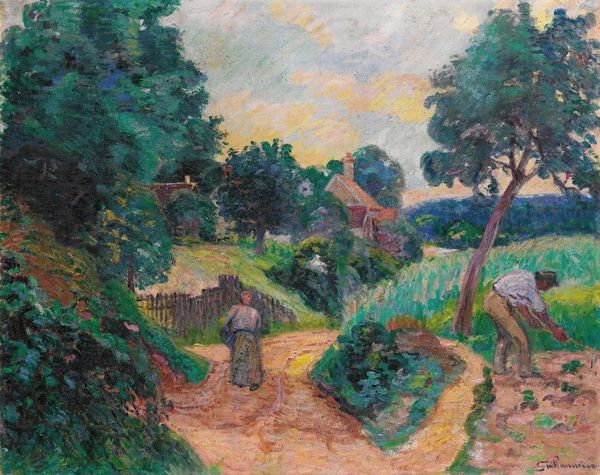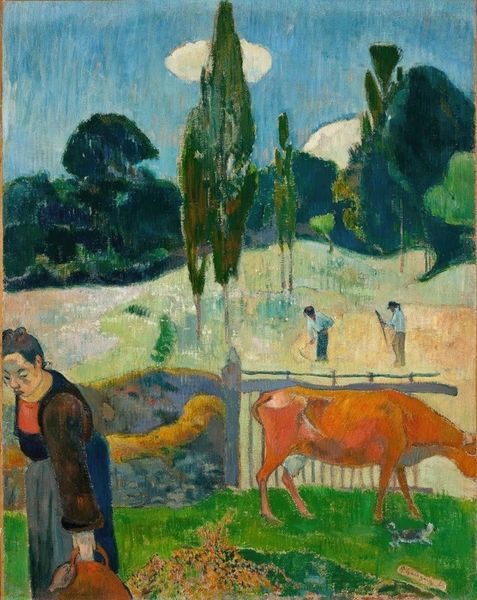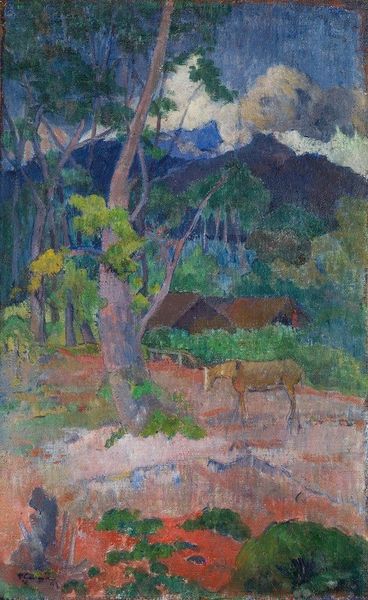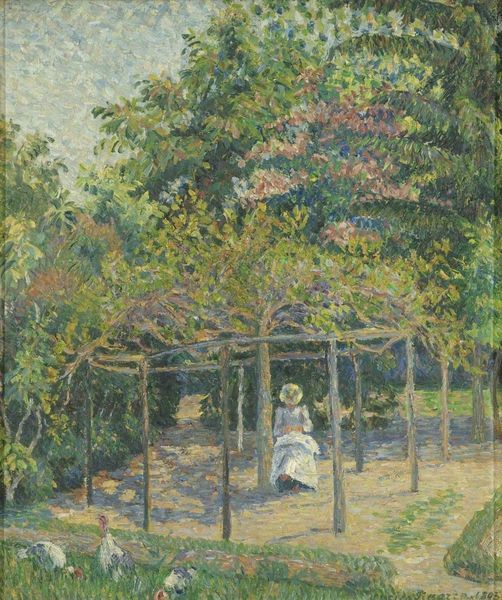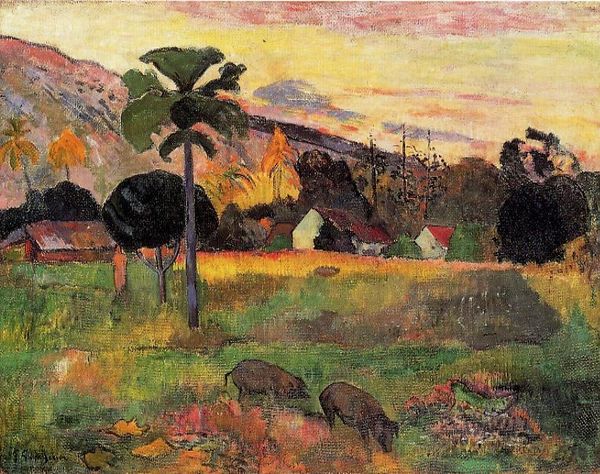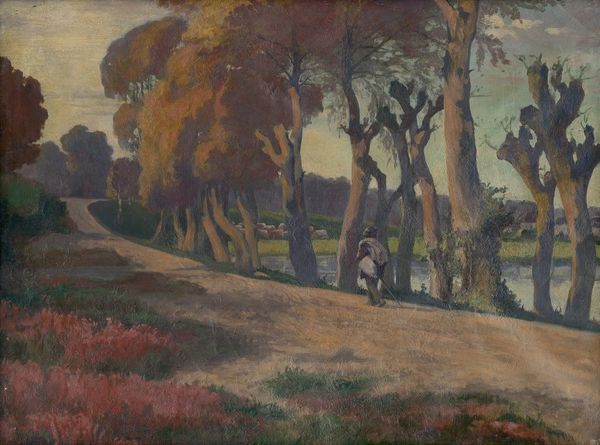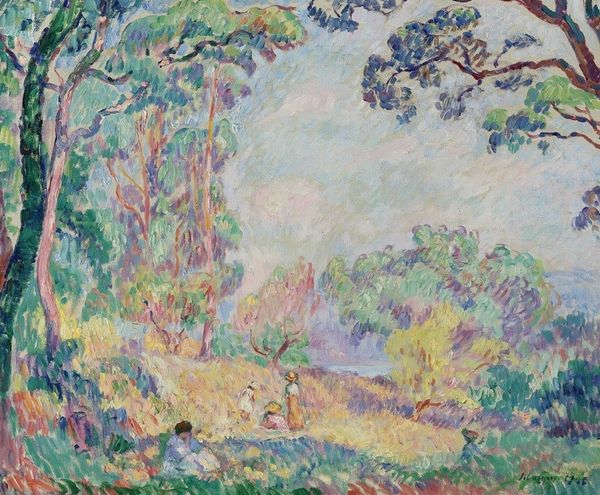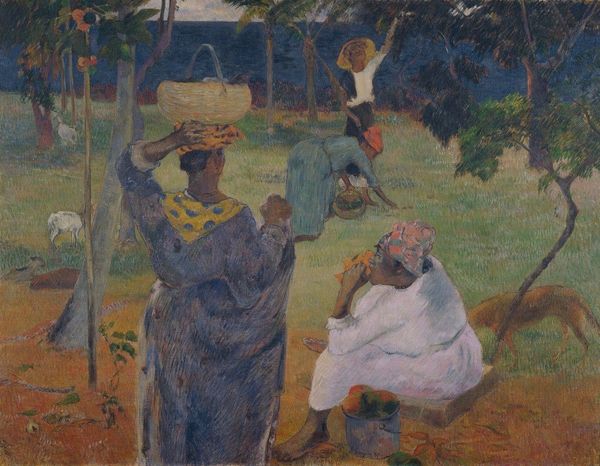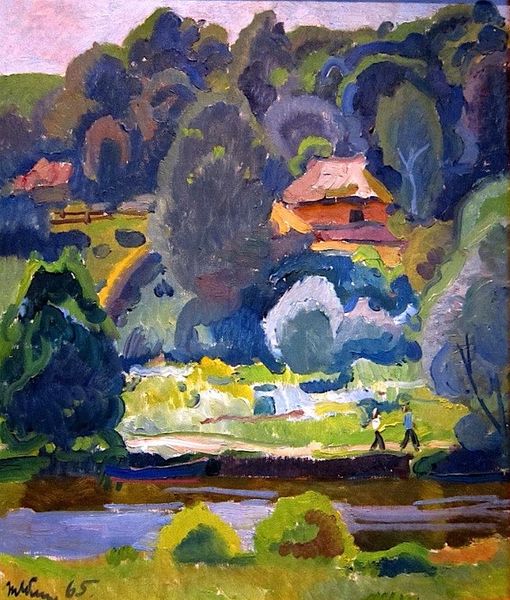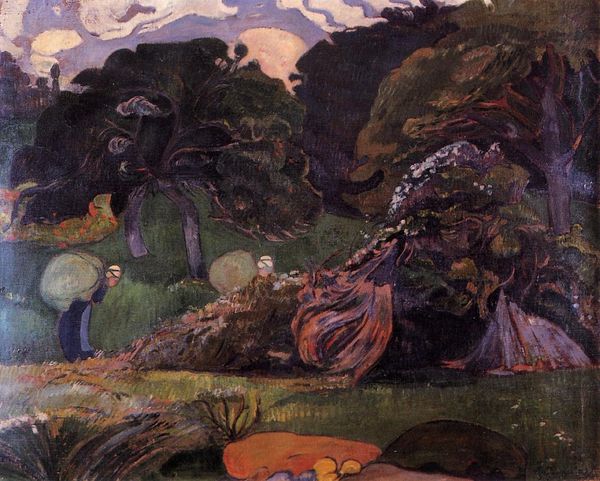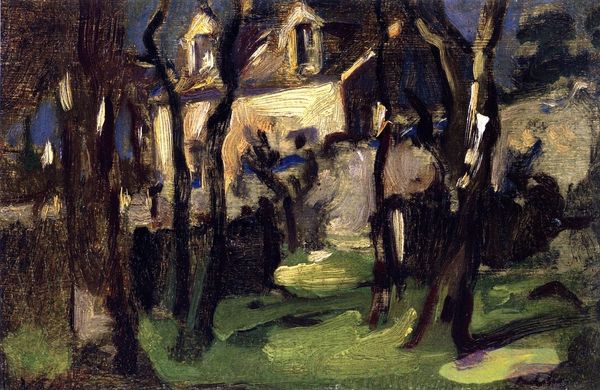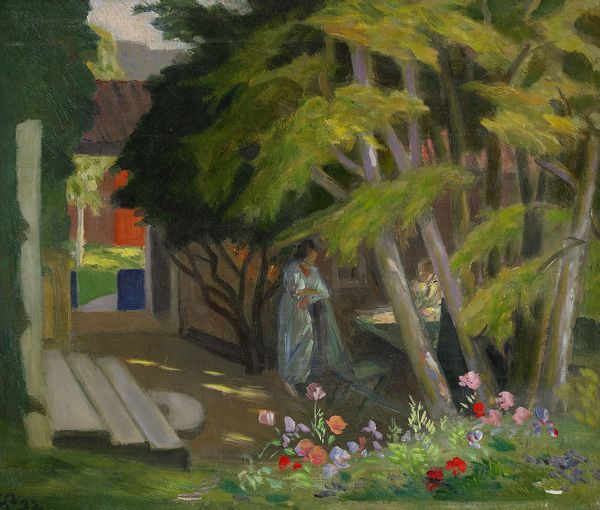
painting, oil-paint
#
painting
#
oil-paint
#
landscape
#
figuration
#
oil painting
#
orientalism
#
post-impressionism
Copyright: Public Domain: Artvee
In Paul Gauguin’s Tahitian Landscape, we see the painter's vision of the island's lush vegetation and local inhabitants rendered in vivid, non-naturalistic colors. The two women and a horse are symbols of pastoral simplicity. But consider the horse: across cultures, this animal carries diverse meanings. Once a symbol of nobility and conquest, and a signifier of wild freedom in Romanticism, the horse here is domesticated, a working animal peacefully grazing. It suggests a harmony between humans and nature. This motif, the horse grazing in a verdant field, is echoed through art history. Think of the ancient Greeks and Romans, where horses symbolized power and prestige, or even Medieval tapestries where horses represented chivalry and noble pursuits. Yet, here in Gauguin's Tahiti, it adopts a new guise. The same symbol is transformed, adapted to express new cultural and psychological realities. The horse, then, becomes more than just an animal; it is a conduit, linking our collective memories and emotional experiences across time and space.
Comments
No comments
Be the first to comment and join the conversation on the ultimate creative platform.
